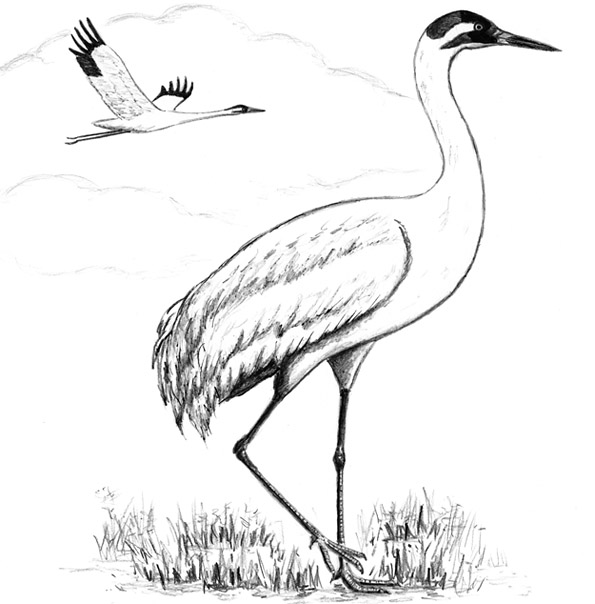
A winter birding trip:
After a mild start, Cape Cod’s winter has suddenly turned into a “Cape Cold” winter. So, I decided it was a good time to head out of town and do some warm weather birding. But where? I’ve been to Florida a zillion times and last year we birded southern Cal and Arizona. What was left? Oh, who am I kidding? I totally know where we had to go…Texas. My son Casey and I have been talking about visiting the Lone Star State for quite a while, but we kept putting it off. Even though Texas has the best birding in the country, it’s still Texas. You know, the home of devastating floods, terrible tornados and weekly executions. Do we really want to deal with all of that for the sake of seeing a few birds? Heck, yeah!
Texas, of course, is a huge state, but the area most appealing to birders is the Rio Grande Valley. This area not only has birds that are found nowhere else in the country, but there’s also a good chance of finding a bird or two that have slipped over the fence from Mexico. Hopefully, we’ll find a few of these birds, too.
We landed in Houston at an airport with the charming name of “Houston Hobby.” After grabbing a rental car, we headed out. Our first stop was the Aransas Wildlife Refuge. This area is not in the Rio Grande Valley, but it’s a place all birders have to visit. Why? The refuge is home to the world’s only naturally occurring wintering flock of rare Whooping Cranes, that’s why. Seventy years ago there were only twenty-one of these cranes left in the wild (my wife has more pairs of shoes than that) and things looked bleak. Fortunately, the extraordinary efforts to save them have paid off. Today the birds are still rare, but are no longer on the verge of extinction.
When we arrived at the massive refuge, it was late in the day (it’s a long drive from Houston Hobby). As a result, we only had a few hours to try and find the cranes before dark. Our first stop was a location called “Heron Flats.” From the parking lot it was a short walk to an observation platform, which overlooked a salt marsh. Our plan was to take a quick look, jump right back into the car and continue on. But we didn’t jump right back into the car. One hundred feet from the platform were two stunning, five-foot tall, adult Whooping Cranes. OMG! It was a sight few people in the rest of the world have ever seen. Casey and I stayed at Heron Flats for the next hour. What a thrill. In addition to the giant cranes, we also saw their smaller cousins, the Sandhill Cranes, plus Roseate Spoonbills, White Pelicans, and assorted herons, egrets and ducks…lots of ducks. I’m sure there were many other birds to see, too, but it was getting dark, which is when the snakes come out, so it was time move on.
After enduring a night at a Holiday Inn, we drove to the Laguna Atascosa NWR, which is just north of Brownsville. This place is awesome (if you can somehow survive driving the terrible entrance road, which has more holes in it than a Bill Cosby alibi). There were several bird feeders set up at the visitors center (hear that, Cape Cod National Seashore?), which attracted thrashers, Olive Sparrows, Great Kiskadees, bobwhites (remember them?) and lots of super-raucous Green Jays. I’m one of the few people who think Blue Jays are beautiful, but the gaudy Green Jays are in a league of their own. Their brilliant green, bright blue, and flashy yellow coloring makes them look like flying black light posters. A little farther down the trail a volunteer pointed out a sleeping Common Pauraque (pa-rah-key). Like Whip-poor-wills, pauraques are nocturnal insect-eating birds and are the antithesis of the rowdy Green Jays. Pauraques are so cryptically colored (mostly brown) they can spend the day quietly roosting on the ground…in plain sight. This pauraque was just five feet off the trail, yet it was nearly impossible to see. Well, impossible for me to see. Just after the volunteer showed us the bird, Casey saw another one a mere two feet away. (Oh, to have young eyes again.)
After leaving the pauraque we hiked to a hidden pond and found a pair of Least Grebes. About the size of a baked potato, Least Grebes are ridiculously small water birds. They looked almost comical as they swam among the “normal” ducks. The petite grebes even put on a sweet little nature show for us, when one of them dove down and came up with a tiny fish. But instead of eating the fish, the bird quickly swam towards the shore and fed the fish to an even smaller baby grebe that had been hiding in the reeds. Cool beans! And it was about to get even cooler.
As we turned away from the grebe pond, we came face to face with a roadrunner. I’ve seen roadrunners before, but usually they are nothing but streaks of feathers running through the underbrush. This bird didn’t streak at all. It came right towards us, as if it was going to ask us for spare change. The laidback bird then proceeded to go about its business and allowed us to take as many photos as we wanted. Why was this roadrunner so friendly? Good question. Perhaps we just looked trustworthy…or maybe the bird thought I was Sean Penn coming to interview it.
Only twenty-four hours into our trip and we had already seen lots of strange and wonderful birds. And more were yet to come. At least I hope so…or I won’t have anything to write about in part two of our winter birding trip to Texas. Stay tuned, pardners.